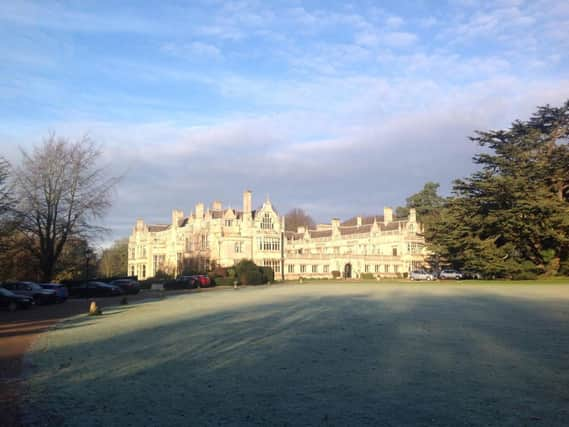How Charles Dickens used Northamptonshire and the people he met as inspiration


In the year marking the 150th anniversary of Charles Dickens’ death, it is interesting to note his associations with Northamptonshire.
He came here often, we know, and he loved our county. Or did he?
Advertisement
Hide AdAdvertisement
Hide AdIn an article for the journal Household Words, in 1851, he was recounting the exploits of a traveller called ‘Mr Lost’ who had ended up in “…one dreadful spot with the savage name of Aynho”.
I doubt that he had actually seen Northamptonshire’s glorious Apricot Village for himself!
However, he was very fond of two other celebrated locations in the county, Rockingham and Rushton.
He and his wife often stayed at Rockingham Castle as guests of Richard and Lavinia Watson.
Advertisement
Hide AdAdvertisement
Hide AdThey met on holiday in Switzerland, and Rockingham became a place that greatly influenced him, and he clearly loved it.
In a ‘thank you’ note in 1851 to Lavinia Watson following a Christmas visit, he wrote: “I always think of Rockingham, after coming away, as if I belonged to it and had left a bit of my heart behind.”
He wrote short plays that were put on in the castle’s Panel Room where he had constructed “a very elegant little theatre”. A playbill shows that he and his wife were in the cast for these.
Dickens made clear that the castle was the inspiration for Chesney Wold, the home of Sir Lester and Lady Deadlock in Bleak House. He gave it a ghostly atmosphere as he confessed to Mrs Watson when he wrote: “In some of the descriptions of Chesney Wold I have taken many bits, chiefly about trees and shadows, from observations made at Rockingham.”
Advertisement
Hide AdAdvertisement
Hide AdHe also wrote parts of David Copperfield there and he dedicated that book to Richard and Lavinia Watson.
As well as the Watsons, Dickens also became very friendly with Clara Thornhill, of Rushton Hall, where he stayed on several occasions. It is probably the inspiration for Satis House, the home of Miss Havisham, in Great Expectations.
And, by strange local coincidence, when the BBC filmed the novel, they chose Holdenby House in the county to be their Satis House!
Dickens based many of his characters on real people, so I wonder if the housekeeper at Rockingham ever recognised herself when she read about the “fine old lady, handsome, stately, wonderfully neat” who kept house at Chesney Wold.
Advertisement
Hide AdAdvertisement
Hide AdWe must never forget his friend, Northampton’s great heroine, Caroline Chisholm.
She was the model for Mrs Jellyby in Bleak House.
Both were philanthropists, both had brass plates at the front door with stairs leading up and both had lots of children.
The parallels are amazing.
Dickens greatly supported Caroline’s work over her Australian migrants and, in Copperfield, Dickens even had Micawber and his family emigrate to Australia with Daniel Peggotty and Little Em’ly.
And finally, can it be that Dickens thought of the workhouse in Kettering, which he knew to be the epitome of ill treatment, when he created Oliver Twist?
It was in Mudfog, which, like Kettering, was 75 miles from London.
Strange that!
Comment Guidelines
National World encourages reader discussion on our stories. User feedback, insights and back-and-forth exchanges add a rich layer of context to reporting. Please review our Community Guidelines before commenting.